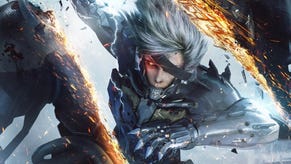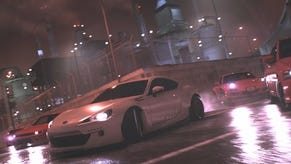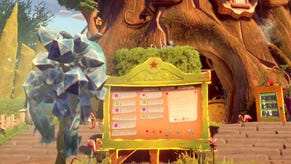Digital Foundry: Hands on with Plants vs Zombies: Garden Warfare 2
Lawn order.
The original Plants vs Zombies: Garden Warfare was something of a surprise hit, and last weekend's console beta for the sequel reveals that PopCap Games has upped the ante. Garden Warfare 2 leverages the evolved Frostbite 3 engine to produce an enhanced, even more action-packed spectacle - but the question is whether the more ambitious sequel can retain the smooth performance of its predecessor, or match the near-locked 60fps experience of stablemate Star Wars Battlefront.
Going into the multiplayer beta, what's clear is that the scale and scope of Garden Warfare 2 is expanded significantly: environments are larger, featuring more in the way of explosive set-pieces that add to the chaos, while more characters are added to the mix. Effects work and lighting is also considerably upgraded too, with more in the way of dynamic light sources and particle effects appearing on-screen during even the more modest firefights.
In terms of the core rendering set-up, perhaps unsurprisingly it's business as usual for PlayStation 4 and Xbox One. Just like the original game, PlayStation 4 runs natively at 1080p, while the Xbox equivalent settles at 900p. As you might expect, the difference in resolution leads to slightly softer imagery on Xbox One, but the gap between the two platforms isn't especially noticeable during gameplay. The post-process anti-aliasing works well in smoothing off the jaggies, with only minor aliasing and pixel-popping issues - even on the lower resolution Xbox One version. Certainly, the presentation overall is a significant upgrade over the 720p we saw in Star Wars Battlefront on the Microsoft console.
Beyond resolution, the core art and effects work are basically interchangeable in Garden Warfare 2, with identical quality levels across almost all aspects of the game's visual make-up, with a decent level of texture filtering in place on both games. However, based on the beta, PS4 seems to have a noticeable streaming advantage: higher quality assets and shadows load in more quickly during cut-scenes and gameplay, which translate to slightly less visible pop-in in areas such as the beginning of a match, or after respawning back into the environment.
Just like its predecessor, Garden Warfare 2 targets 60fps gameplay for the smoothest possible action paired with crisp controller response - and v-sync is in place on both systems. Emerging from a lunar base for our first match, both platforms hold to that 60fps target with ease: small skirmishes have zero impact on performance, and gameplay feels smooth and responsive. As the player count rises, we see the introduction of a few mild performance drops on both systems, but nothing that overly distracts from the action.
It's only when the engine is under heavy, sustained load that more noticeable differences start to appear, with PS4 carving out a lead over the Xbox One version in the most demanding scenes. With around a dozen players occupying a single area, the volume of particle effects in particular appears to cause issues, bringing with it an impact in controller response. Aiming feels a lot heavier and it's harder to shoot more accurately with all the chaos kicking off on-screen.
The Z-Tech Factory stage hits the engine the hardest in the beta code we tested, and it's here where we see the Xbox One drop down to 40fps at its lowest point, while on the same stage in similar conditions, the PS4 runs around 10 per cent faster. During these moments neither platform offers up a satisfactory experience, as you don't feel fully in control. That said, remarkably it's still possible to enjoy these epic moments of madness: it simply comes down to a case of 'hit and hope' when firing off dual-machine guns or unleashing a sunbeam - and enjoying the immense mayhem that unfolds.

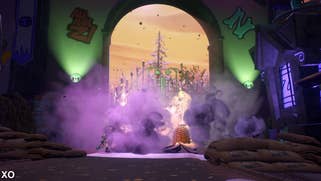




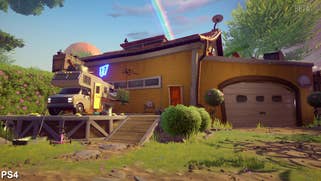

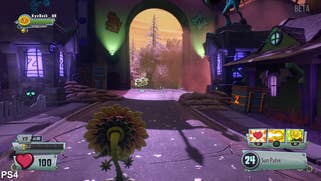
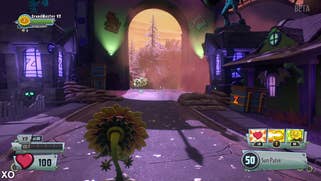

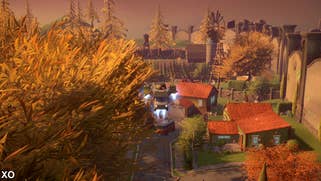
Overall, based on our testing of the beta code, PopCap deserves kudos for the sheer ambition sunk into this sequel: dynamic lighting and particle effects are used more liberally this time around, so projectiles fired by plants such as the Peashooter give off more of a spectacle - and when surrounded by a group of players all blasting away at each other, this creates for some really exciting scenes with an almost insane level of visual extravagance.
On top of that, the environments themselves are beautifully realised too, benefiting from the use of more advanced surface shaders. The Frostbite 3 engine's support of physically-based rendering really stands out here: while Garden Warfare 2 features a stylised look, various elements, such as snow and stone, have more realistic qualities to them due to the way that materials react to the surrounding lighting.
Our takeaway from the beta is that the series' second instalment is shaping to be a solid improvement over the original, just from a gameplay perspective, and it packs a nice visual punch too. Hectic scenes where all hell breaks loose are now the norm, making for an exciting experience that's hard to put down. But as things stand, performance doesn't hold up quite well enough. With a month to go until the final release, it remains to be seen just how much optimisation might be possible. While we don't expect a completely locked 60fps on either platform at all times, it would be great to see a modest increase in frame-rates in hectic scenes, in line with the original Garden Warfare. Failing that, for shooting purists who demand uncompromised performance, there will be a PC version too. But as things stand, this sequel is still tremendous fun to play and we look forward to getting our hands on the final release.


